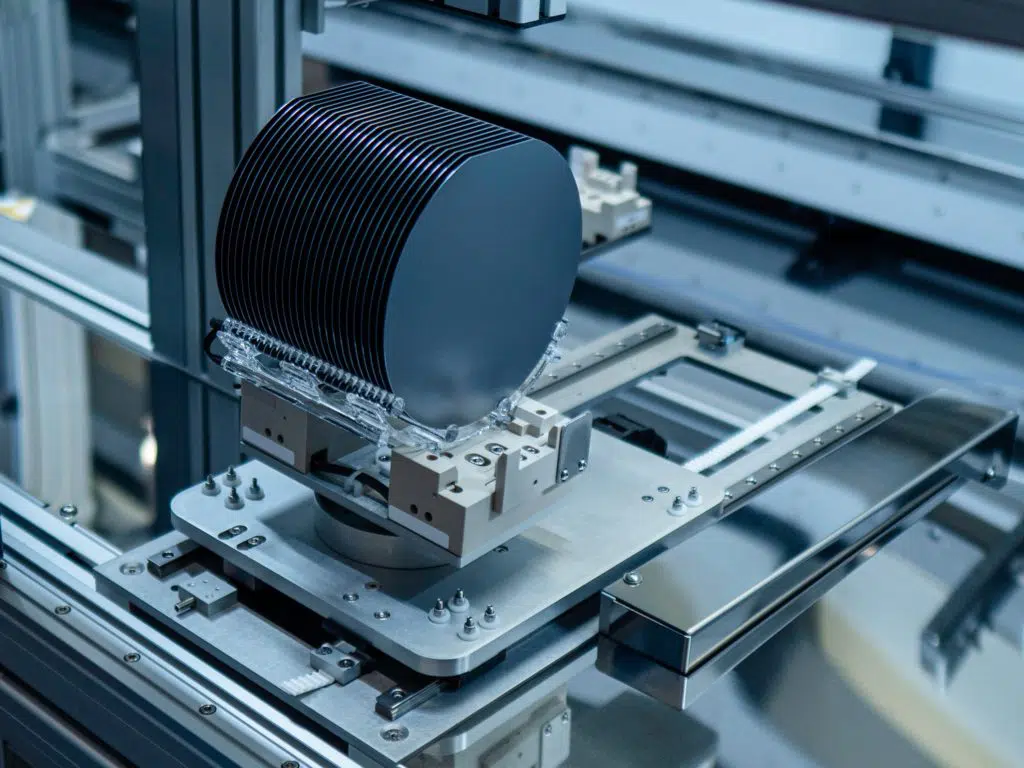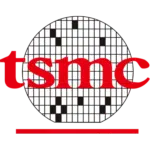
Join Global Leaders in Greater Phoenix
A Top U.S. Semiconductor Hub
Greater Phoenix has been a leader in semiconductor development since 1949 when Motorola first opened a facility in the region. This legacy company set the stage for Greater Phoenix to house companies such as onsemi, NXP Semiconductors and Microchip Technology and secure investments of billions of dollars from giants such as Intel and TSMC. The region’s engineering workforce, education partnerships, business-friendly operating environment and deep manufacturing history have positioned it to emerge as a global semiconductor manufacturing hub.
Semiconductor Industry Report
Get our 25-page, in-depth report on the semiconductor ecosystem in Greater Phoenix.
Robust Workforce

Semiconductor Expertise
With an increasingly strong semiconductor presence in Greater Phoenix, the region boasts a strong workforce with an exceptional talent pool. Greater Phoenix offers more than 140,000 jobs in occupations relevant to semiconductors. With a supportive tax environment and low operating costs compared to competitor markets, both new-to-market and existing semiconductor operations can find success in Greater Phoenix.
Semiconductor-Related Occupations by Metro
Greater Phoenix offers an abundance of potential candidates with extensive knowledge in all areas of the semiconductor industry. The table below shows the total number of jobs in relevant occupations in the selected metro regions. See how Greater Phoenix stacks up to competitor regions.
| Occupation |
Phoenix |
Dallas/ Fort Worth |
Portland |
San Jose |
|---|---|---|---|---|
General and Operations Managers |
58,242 |
106,789 |
27,030 |
21,854 |
Software Developers and Software Quality Assurance Analysts and Testers |
28,973 |
46,955 |
16,305 |
69,230 |
Computer and Information Systems Managers |
9,614 |
17,404 |
6,413 |
20,201 |
Inspectors, Testers, Sorters, Samplers and Weighers |
7,631 |
15,706 |
4,188 |
5,889 |
First-Line Supervisors of Production and Operating Workers |
5,963 |
15,306 |
4,512 |
3,491 |
Industrial Engineers |
4,992 |
8,602 |
3,526 |
3,856 |
Electrical, Electronic, and Electromechanical Assemblers, Except Coil Winders, Tapers and Finishers |
4,261 |
6,582 |
3,216 |
13,053 |
Mechanical Engineers |
3,538 |
6,047 |
2,724 |
4,626 |
Electrical Engineers |
3,078 |
5,078 |
2,342 |
4,911 |
Architectural and Engineering Managers |
2,513 |
5,121 |
3,782 |
7,026 |
Software Quality Assurance Analysts and Testers |
2,330 |
8,366 |
2,095 |
9,748 |
Semiconductor Processing Technicians |
2,317 |
2,296 |
4,890 |
2,626 |
Industrial Production Managers |
2,253 |
4,664 |
1,913 |
2,534 |
Industrial Engineering Technologists and Technicians |
1,867 |
1,450 |
2,131 |
449 |
Electrical and Electronic Engineering Technologists and Technicians |
1,679 |
2,861 |
2,159 |
4,005 |
Electrical and Electronics Drafters |
907 |
756 |
320 |
474 |
Computer Hardware Engineers |
353 |
2,106 |
7,383 |
7,626 |
Materials Engineers |
238 |
410 |
330 |
571 |
Total |
140,748 |
256,500 |
95,257 |
182,172 |
Source: Lightcast 2023 Q1 Dataset
30499
Greater Phoenix is home to 30,499 semiconductor and other electronic component manufacturing jobs
Source: Lightcast 2023 Q1
$60B
The United States exported $60 billion in semiconductors in 2021
Source: Semiconductor Industry Association
4th
Greater Phoenix is the fourth-largest metro area for semiconductors manufacturing employment
Source: Lightcast 2023 Q1
Large Existing Cluster
Greater Phoenix Semiconductor Ecosystem
Whatever the operation type, Greater Phoenix has demonstrated that it has the ecosystem to support microelectronics firms big and small. Companies ranging from startups to well-established semiconductor operations have helped build the industry in the region, supporting growth specific to the semiconductor industry year after year.
In addition to major semiconductor manufacturers, Greater Phoenix has a network of industry suppliers covering materials, chemicals and machinery necessary to keep operations going. Below are some of the suppliers operating in Greater Phoenix.
Major Semiconductor Companies in Greater Phoenix
Explore the interactive map below to see more big players in the Greater Phoenix market.
Source: MAG Employer Database 2021; GPEC Analysis
Reliable Infrastructure

Powering Semiconductor Facilities
Greater Phoenix offers the second-most reliable power grid in the nation, giving consistent power support to the semiconductor industry throughout the region. With 73% fewer natural disasters than the adjacent state of California, semiconductor operations can rest easy knowing operations and productivity are rarely disrupted by outside factors. Over the last 10-year period, Arizona recorded only 33 total hours of disturbances. Semiconductor operations can reduce risk and increase operating efficiency by moving to Greater Phoenix.

Airline Connectivity & Access
Ideally situated in the southwest, Greater Phoenix not only meets airport logistic demands with cross-country flights and quick access to major metros in California and Texas, but serves as a direct carrier to and from companies in Mexico. A joint U.S.-Mexico customs facility under development at Phoenix-Mesa Gateway Airport will be the first of its kind in the country, easing the burden on companies that export goods.

Regional Rail Access
Greater Phoenix is served by two major railroads, Union Pacific and BNSF. With major rail lines throughout the entire Southwest reaching Greater Phoenix, semiconductor operations can rely on these railroad systems for both the import and export of goods and materials.

Industrial Gas Manufacturers
Greater Phoenix has a network of industrial gas manufacturers in the region available to meet the needs of manufacturing operations. Airgas, Matheson and Air Products & Chemical are among companies that operate in the region.
Download the full industry analysis for more on Greater Phoenix infrastructure.
Competitive Operating Costs

Companies in Greater Phoenix enjoy the benefits of low business costs, minimal regulation and an advantageous operating environment in a right-to-work state. From aggressive tax credits and incentive programs designed to increase access to capital, the Greater Phoenix region offers businesses a robust, pro-business climate.
Annual Business Operating Cost Comparison
The Annual Business Operating Cost Pro-forma below estimates the cost of running a typical semiconductor business in competitor markets across a handful of major expense categories. Component and custom analyses to match your company’s operations can be provided upon request. Contact us to request a custom analysis for your business.
| Metro |
Employee Payroll |
Fringe And Mandated Benefits |
Real Estate Payments |
Property Tax |
Total Operating Cost |
Index |
|---|---|---|---|---|---|---|
Phoenix |
$10,168,875 |
$2,265,048 |
$1,282,800 |
$2,958 |
$13,719,681 |
100.0% |
Dallas-Fort Worth |
$11,364,180 |
$2,531,130 |
$1,380,000 |
$140,598 |
$15,415,908 |
112.4% |
Portland |
$10,567,446 |
$2,455,004 |
$1,303,600 |
$63,240 |
$14,389,290 |
104.9% |
San Jose |
$14,372,472 |
$3,267,189 |
$2,750,400 |
$72,600 |
$20,462,661 |
149.1% |
Assumptions: $6,000,000 personal property investment; 40,000 square foot Suburban Class A, Lease; Utilities (per month): Included in Lease; 100 jobs (Bureau of Labor Statistics equivalent occupations)
HB2822: Tax Reduction to Benefit Data Centers
HB2822 reduces businesses’ tax burden by setting the full cash value of business and agricultural property at a fixed 2.5% of the property’s acquisition cost, rather than a depreciation schedule. This lowers the assessed value of the property and greatly reduces tax payments. Over a 10-year period, the personal property tax on a $500 million property would be just $2.4 million, a fraction of the nearly $51-million tax on standard depreciation. Below is a table comparing deprecation value of the property before and after the passage of the bill. Get more information here.
| Schedule | Year 1 | Year 2 | Year 3 | Year 4 | Year 5 | Year 6 | Year 7 | Year 8 | Year 9 | Year 10 |
|---|---|---|---|---|---|---|---|---|---|---|
Previous (Pre-2022) |
22.5% |
35.7% |
45.0% |
51.1% |
53.4% |
47.0% |
36.0% |
24.0% |
12.0% |
2.5% |
Current (Since 2022) |
2.5% |
2.5% |
2.5% |
2.5% |
2.5% |
2.5% |
2.5% |
2.5% |
2.5% |
2.5% |
Calculate Your Real Estate Savings
Select your MSA, building type and square footage to see how much you would save on annual real estate costs in Greater Phoenix.
Type
Sq. Feet
Calculations were performed using annual lease rates per square foot, effective property tax rates, and average costs of water, wastewater, electric and natural gas; utilities are included in office lease rates.
Sources: GPEC Metrocomp Tool
Exceptional Talent Pipeline

State Support of Engineering Leads to Qualified Graduates
Greater Phoenix’s semiconductor companies not only helped to shape the region’s economy but had a key role in advocating for improvement to Arizona’s educational system through investment, public support and partnerships with local universities and community colleges. In 2020, more than 5,500 students graduated with semiconductor-related degrees from Arizona State University (ASU), University of Arizona (U of A) and Northern Arizona University (NAU).
University Alignment
Arizona has three four-year public universities: ASU, with four campuses around Greater Phoenix; U of A, based in Tucson; and NAU, based in Flagstaff. Each school has a full range of electrical engineering, computer engineering, engineering technology/technician, computer science, and informatics programs. Between these three universities, various junior colleges, and a number of coding schools and boot camps available in the region, Arizona’s institutions of higher education are preparing the workforce of tomorrow.
| University |
Type |
City |
Engineering Enrollment |
Semiconductor Graduates |
Total Graduates |
|---|---|---|---|---|---|
Arizona State University |
4-yr Public |
Tempe |
30,000 |
1,451 |
31,880 |
University of Arizona |
4-yr Public |
Tucson |
2,885 |
276 |
10,809 |
Northern Arizona University |
4-yr Public |
Flagstaff |
2,570 |
211 |
7,746 |
Total: |
– |
– |
35,455 |
1,938 |
50,435 |
Source: Arizona State University, University of Arizona, Arizona Board of Regents, Lightcast 2023
More Higher Education Opportunities
Maricopa Community Colleges
Consisting of 10 campuses across the region, Maricopa Community Colleges serves over 100,000 students each year. The district partners with major industry players to produce programs relevant to semiconductors and graduates prepared for the workforce.
Grand Canyon University
Grand Canyon University is a private Christian university located in Phoenix committed to training the next generation of working professionals. Relevant professional programs include computer science, electrical engineering, mechanical engineering and software engineering.
General Assembly
With 20 schools worldwide, including one in Phoenix, the school offers a variety of coding and technology-focused programs part-time, full-time, online and in-person. Studies include data science and software engineering.
Quality of Life

Living in Greater Phoenix
Experience a vibrant lifestyle and diverse culture at an affordable cost of living.
Enjoy the outdoors with more than 300 days of sunshine, average temperatures of 75 degrees, convenient access to over 400 hiking trails and globally recognized sporting events. Take part in a vibrant arts and culture scene that includes prominent classical arts to public art to craft markets and a diverse range of music and cultural events. And, eat well with fresh farmers markets in every city, and globally recognized chefs and culinary experiences at your doorstep. Click the icons below to learn more about Greater Phoenix living.
#1
most relaxed U.S. city — Phoenix, AZ
StorageCafe, 2022
#1
on Yelp's 'Top 100 Restaurants in the U.S.' is Cocina Madrigal in Phoenix
Yelp, 2022
#1
least annoying neighborhoods in America
HomeAdvisor, 2022
#1
best work-from-home city in the U.S. — Scottsdale, AZ
SmartAsset, 2021











